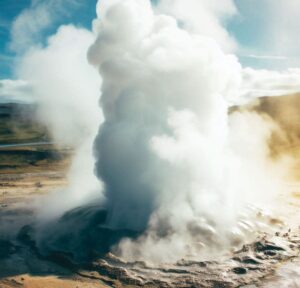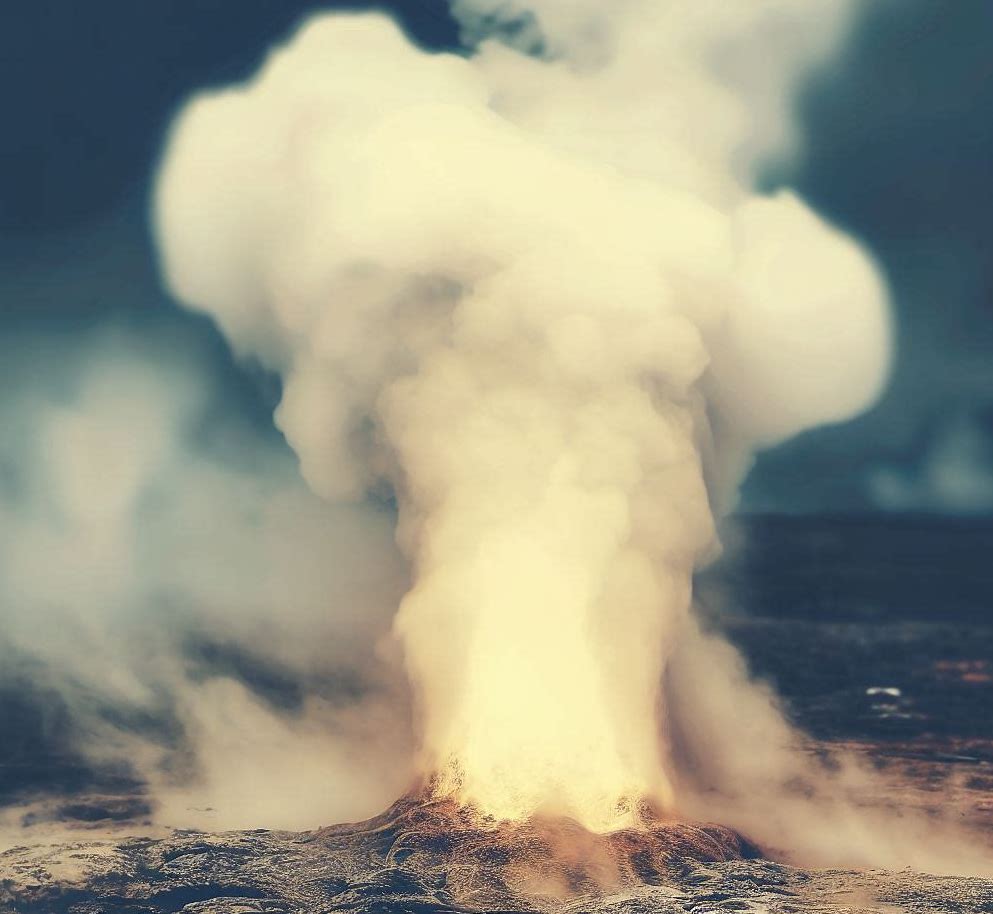The Geothermal energy, considered one of the hidden power sources, is garnering spotlight as the world veers to the sustainable and eco-friendly alternative energy. Originating from the original formation of the planet and the radioactive decay of materials, geothermal energy sets forth new dimensions in the realm of renewable energy resources.
Nature of Geothermal Energy
Geothermal energy is fundamentally the thermal (heat) energy stored deep within the Earth. The term “geothermal” is derived from two Greek words – ‘geo,’ meaning Earth, and ‘therme,’ meaning heat, clearly indicating that this energy source is earth-heat based. This naturally occurring energy has been continually produced beneath the Earth’s crust since the planet’s formation approximately 4.5 billion years ago.
 The ultimate source of geothermal energy is the natural decay of radioactive elements like uranium, thorium, and potassium within the Earth’s core and mantle. These elements release energy in the form of heat when they decay, which builds up and gets trapped under the Earth’s hard crust. This heat builds up over time, giving us access to a potent and sustainable source of energy.
The ultimate source of geothermal energy is the natural decay of radioactive elements like uranium, thorium, and potassium within the Earth’s core and mantle. These elements release energy in the form of heat when they decay, which builds up and gets trapped under the Earth’s hard crust. This heat builds up over time, giving us access to a potent and sustainable source of energy.
The average temperature in the Earth’s core stands around 5700 degrees Celsius (or about 10,300 degrees Fahrenheit), which is comparable to the temperature on the Sun’s surface. This heat from the Earth’s core, along with heat from the radioactive decay of minerals within the mantle and crust, make up geothermal energy.
The ability of the Earth’s crust to contain this heat creates geothermal reservoirs. These reservoirs exist in many parts of the world. Some of the heat comes to the surface by way of fumaroles (openings in the Earth’s crust), hot springs, and geysers, without the need for any human-made systems. However, to harness and convert this heat energy into usable energy – electricity or heat – we need to tap into these reservoirs using geothermal energy plants and technologies.
Geothermal energy is a potent, sustainable, and largely untapped resource that’s continually being generated below the Earth’s surface. We are now developing technologies to utilize this interior heat more efficiently and widely, aiding our journey to the more sustainable and energy-efficient future.
The working principle of geothermal energy is quite simple yet intriguing. To tap into geothermal energy, extensive drilling is performed deep into the Earth’s crust. As hot water and steam rise from these wells, they are captured at the top and used to spin turbines or for direct heating purposes.
Historical Usage
The utilization of geothermal energy traces back to prehistoric times when early humans first discovered the warmth and healing properties of natural hot springs. These springs served a variety of functions, including bathing, relaxation, and spiritual rituals. This is believed to have happened during the Paleolithic era, commonly known as the Ice Ages. Over time, these hot springs became central to many civilizations worldwide, as they provided a constant source of heated water even in the harshest weather conditions. In various parts of the world, geothermal energy took on different roles throughout history. For instance, the native people of North America used hot springs for cooking, while the early Romans ingeniously developed thermal baths that exploited the natural heat from the Earth’s core.
However, it was not until the late 18th and early 19th centuries, during the Industrial Revolution, that geothermal energy’s potential began to be recognized for more practical and widespread usage. Modern uses expanded beyond bathing and cooking to include space heating and agricultural applications like heating greenhouses. The first instance of electricity generation using geothermal energy was in Italy in early 20th century. Piero Ginori Conti created a system using steam extracted from a natural vent to power five lightbulbs, and this marked the beginning of harnessing geothermal energy for electricity production. The first large scale geothermal power plant was installed soon after in 1911 at the same location, Larderello, Italy.
Today, geothermal energy has broadened its applications beyond space heating and lighting. It is now being utilized in a wide range of sectors. District heating systems, industrial processes, and even cooling systems are some of the modern uses of geothermal energy. Its evolution over time attests to its crucial role and its potential in meeting the contemporary world’s growing power and environmental needs. The usage and application of geothermal energy demonstrate a fascinating journey that has evolved and expanded in congruence with human civilization’s progression and technological innovation.
In the modern context, geothermal energy is extensively used for both heating and electricity generation. Countries like Iceland, Indonesia, and the Philippines are harnessing this power to a great extent. Beyond power generation, geothermal energy provides valuable environmental and economic benefits. It aids in maintaining a lower carbon footprint while also fueling job creation and local development.
Challenges and Limitations
Geothermal energy, while having massive potential, does face several significant challenges that currently limit its wide-scale use. One of the most prevalent challenges is the high upfront costs associated with setting up geothermal plants. The construction of geothermal power plants requires extensive investment in drilling, installation, and equipment, which can deter many potential investors. Not to mention, the operating costs of such plants can also be hefty due to the high maintenance required to keep these plants running smoothly.
Even before the construction phase, extensive geological surveys are needed to identify viable sites for geothermal energy extraction. Such surveys require the use of advanced technology and specialized skill sets, making this a costly and time-consuming procedure. There is also a probability of not finding a site with a high enough temperature gradient to make the investment worthwhile, further adding to the risk of such ventures.
In addition to the economic and procedural hurdles, there are also environmental concerns associated with geothermal energy. One critical concern is the risk of inducing seismic activity. The drilling and injection of water into hot rock formations can cause minor earthquakes, known as induced seismicity. While these are generally of low magnitude, they can cause damage to infrastructure and pose potential risks to public safety. Access to geothermal resources is often restricted to certain geographical locations near tectonic plate boundaries, limiting its development to certain region-specific areas. Scaling up geothermal power to its full potential would undoubtedly require overcoming these and other challenges. Navigating these hurdles will require technological advancements, sizable investments, effective regulatory frameworks, and careful site selection and management.
Optimism for this energy source is kept alive by recent technological breakthroughs. Innovation in drilling and exploration technology, improved efficiency of power plants, and newer methods of mitigating environmental impacts have enabled larger and deeper reservoirs to be tapped. With climate change commanding the urgent attention of the globe, the role of geothermal energy becomes increasingly significant. In a world largely powered by geothermal energy, we could meet our growing energy demands without negatively impacting our environment. The possibility of such a reality could indeed be the beacon paving the way for a new era of sustainable and eco-friendly living.

